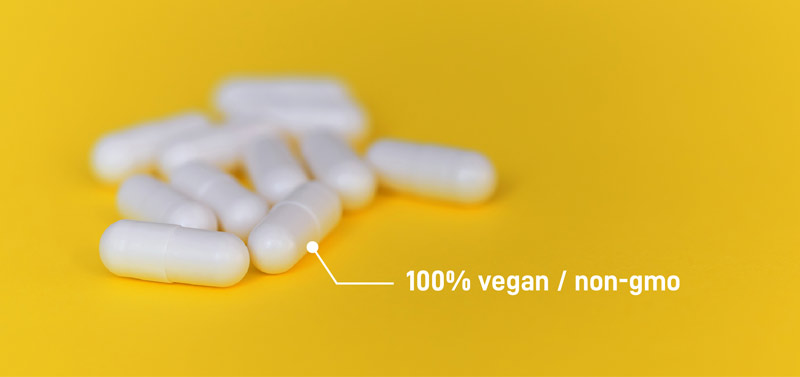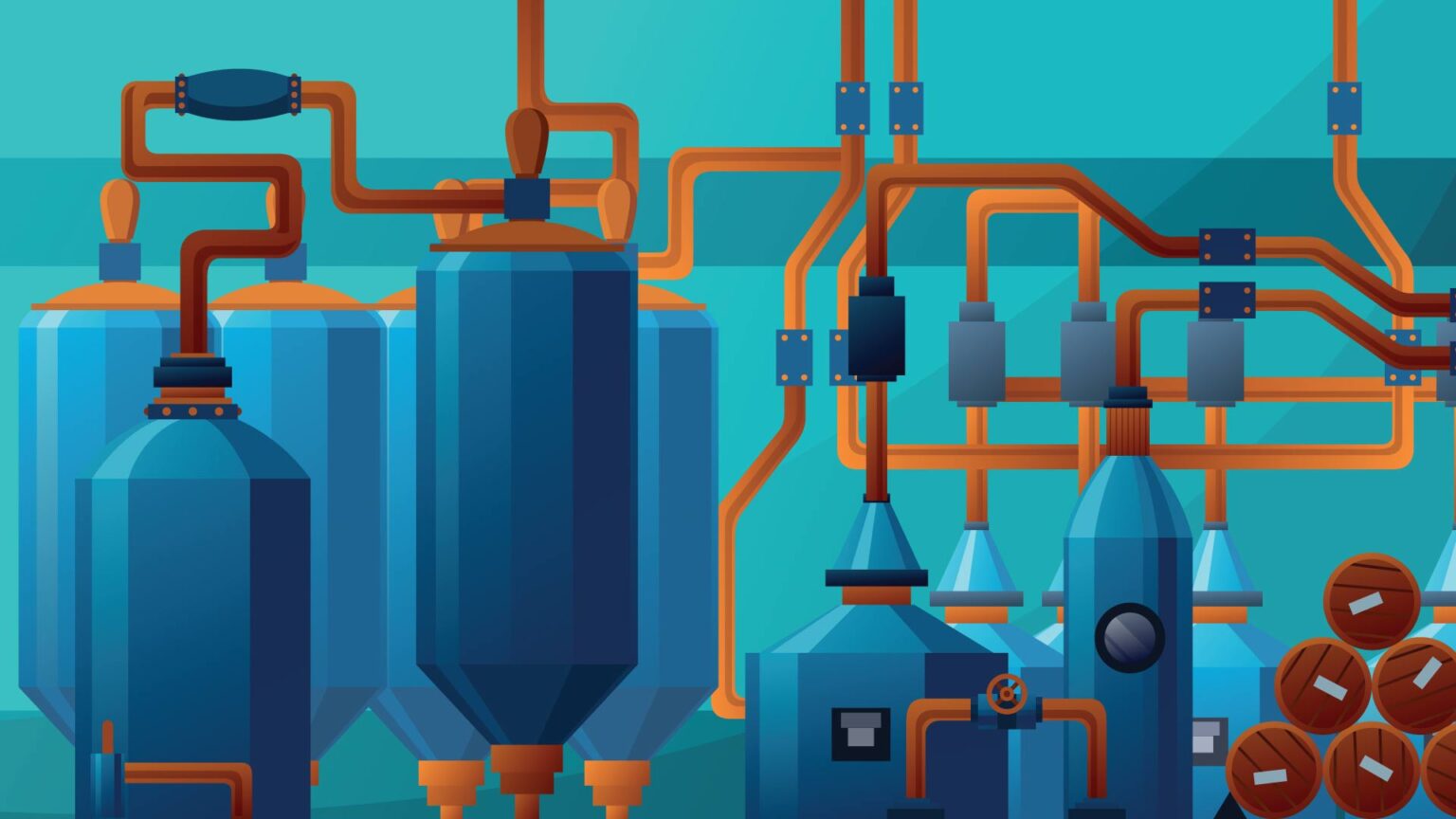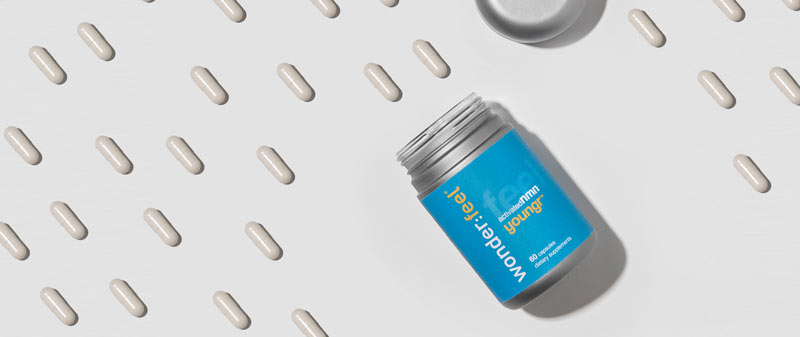Hands up if you’re the kind of scrupulous consumer who researches a dietary supplement before popping the capsule. Don’t feel bad – it’s the rare person who takes the time to understand exactly where a supplement comes from or how it’s made. But from ingredient sourcing to the production process, knowing a bit about your supplements is a smart move. And in that spirit, we’re putting everything you need to know about how Wonderfeel NMN supplements are manufactured right here in one spot.
First, let’s talk about how NMN is produced and manufactured.
Before diving into the sourcing and production method of Wonderfeel’s NMN specifically, let’s talk about manufacturing NMN in general. To date, NMN is typically produced via chemical or enzymatic synthesis or fermentation biosynthesis. As you might expect, there are pros and cons to all three methods.
Chemical synthesis
It’s expensive and labor intensive, and all raw ingredients used are categorized as “unnatural,” i.e., not from biological systems. There are, however, some advantages from the manufacturer’s perspective. The yield is well suited to mass NMN production, and all of those unnatural raw ingredients can be carefully controlled. But there are a number of drawbacks as well. Some of the solvents used when NMN is manufactured are seriously bad from an environmental standpoint, and impurities and by-products can be challenging to remove from the finished product – that’s seriously bad for the consumer.
Enzymatic
Enzymatic production of NMN, on the other hand, is considered a “green preparation method.” Like the chemical route, it’s pricey, but it offers a higher yield and impressively high purity. This way of manufacturing NMN ticks all the boxes – stable, easily absorbed, lightweight, low density, and a low molecular structure. This is the method of manufacture found in Wonderfeel NMN.
Fermentation
Fermentation has also been explored as a method of producing NMN, but yield, though high quality, is pretty abysmal, so many supplement companies quite sensibly look to other, more efficacious processes.
Meet the Wonderfeel NMN enzyme – where it all begins.
Here at Wonderfeel, our starting material is an enzyme cloned from Kluyveromyces marxianus, a fine member of the Saccharomycetales yeast order. It’s considered a most auspicious unconventional yeast, and it’s typically isolated from a mix of natural habitats, including fermented traditional dairy products, kefir grain, sisal leaves, and plants. K. marxianus is characterized by rapid growth rates, lactose utilization, and a commendable tolerance to inhibitory molecules. Thermotolerance, which is a cell or organism’s ability to survive what should be lethal heat stress, actually facilitates these applications. In plain language – this food-grade yeast has all the right characteristics for the food and biotech industries. We know because before we manufactured our Youngr™ NMN we completed rigorous analysis on this particular enzyme to ensure it has no trace of residue protein or DNA.
The food-grade classification is key – that association is why K. marxianus has GRAS/QPS status. In other words, it’s “generally considered as safe” by the U.S. Food and Drug Administration (FDA) under the conditions of its intended use, and it has a “qualified presumption of safety” from the European Food Safety Authority.
Other noteworthy points – K. marxianus is non-GMO, and recent research concludes it might be considered a probiotic microorganism with a variety of commercial and medical applications.
How and where is Wonderfeel NMN manufactured?
Wonderfeel Youngr™ NMN is made at cGMP-certified facilities in the USA that comply with the highest FDA standards for everything from design to monitoring to control of the entire manufacturing process. We use a pure enzymatic process to produce our NMN – it isn’t animal-based in any way. We have 36 months of data to prove the stability of our NMN, along with certifications to show that:
- No irradiation is used
- No ETO-sterilization is used
Of course, like our starting enzyme, our finished NMN supplement is entirely non-GMO. To top it off, our capsules are 100% vegan and made from vegetable cellulose for our plant-based lifestyle fans.

Why this all matters.
The risk you run when you choose a random NMN supplement – or any supplement, for that matter – is in the unknown. Some manufactured NMN comes from overseas suppliers, with no cGMP credentials, and could very well be a chemical grade form masquerading as food or pharmaceutical grade for human use. And here’s a startling fact – even if NMN shows 99% purity if it comes from a non-GMP facility used for chemical manufacturing, the potential impurities pose a huge risk for human consumption.
In general, transparency about how companies manufacture NMN supplements tends to be seriously lacking. Information about base materials and manufacturing processes simply isn’t made public, and too many people don’t think to ask.
Instead, we just assume that the products we buy have been vetted in some way for safety, purity, and efficacy. And while that’s true in some cases, it doesn’t apply across the board. In fact, dietary supplements – including NMN – fall into the realm of postmarket enforcement for the FDA. Unlike drugs that must be proven safe and effective before coming to market, “there are no provisions in the law for FDA to approve dietary supplements for safety before they reach the consumer.” What does that mean for the consumer? Simple – you need to know more than what the label on that bottle of vitamins tells you, and that the company behind the product is committed to doing things the right way. And in the case of Wonderfeel, you can be confident that we are.

